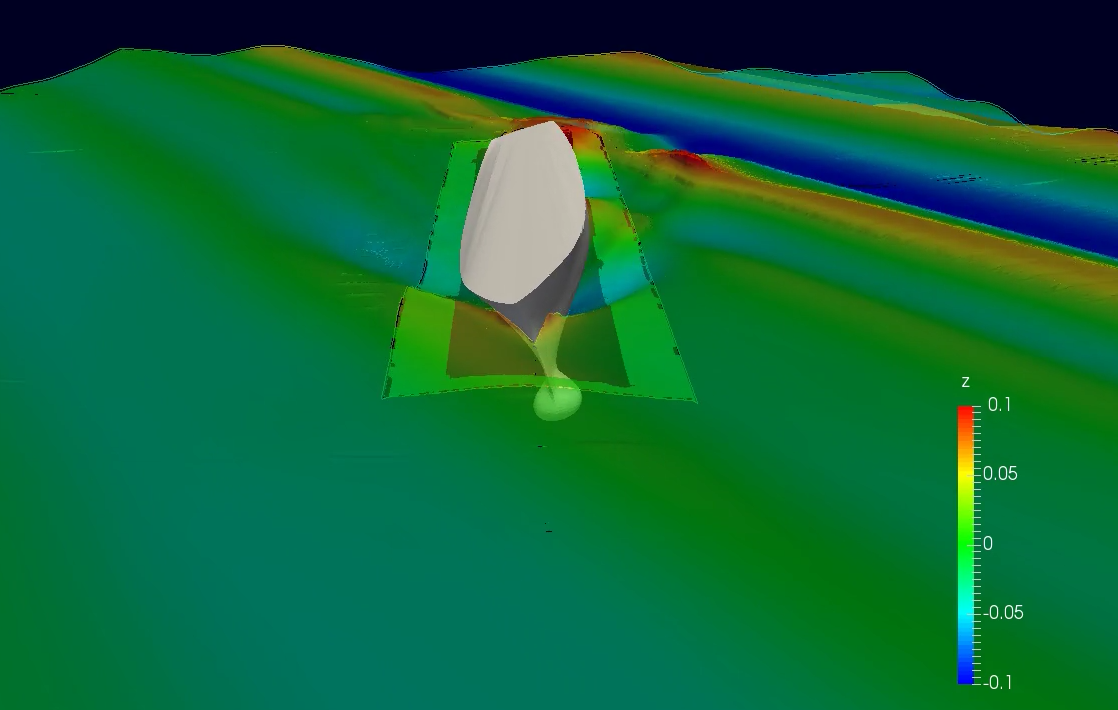
Naval hydrodynamics CFD
CFD simulation methods for free surface flows have been a focus of the research group for almost 3 decades; VOF compression, free surface numerics, geometric reconstruction of the interface, ghost fluid method and interface jump conditions are the results of this work. The current focus is on naval hydrodynamics applications with complex physics extensions such as:
- multi-phase compressibility
- green water modelling
- sloshing and slamming
- phase change
- predictive cavitation modelling
- contact angle and capillary effects
Numerical simulations of full scale ships brings further demands in terms of speed, efficiency, ability to handle large time-steps, as well as simulation of real operating conditions:
- sea-keeping in regular and irregular waves: 6-DOF hydro-mechanical coupling, ODE solvers, supporting constraints and restraints
- free-sailing (under self-propulsion): balancing propulsion and resistance
- maneouvring and course-keeping: moving rudders and PID controllers
- irregular sea states, focused waves, Higher Order Spectrum Models, blending and relaxation zones
To make this work well, specialist numerics and naval-hydro-specific expansions are developed and validated via public benchmarks.
